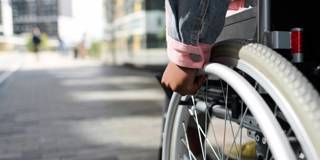Disability is both a cause and a consequence of poverty, especially for women. If the world is to have any hope of achieving the Sustainable Development Goals – especially eliminating poverty, achieving gender equality, and enhancing social and economic inclusion – the needs of people with disabilities must be fully considered.
ACCRA – It is well known that women in developing economies have fewer educational and employment opportunities than their male counterparts, leading to higher rates of poverty. In Ghana, for example, men have higher employment rates and incomes than women, and are less likely to be engaged in vulnerable jobs. Less widely recognized is that, by some metrics, the gap is not narrowing quickly enough: women in developing economies continue to account for a significant share of the economically disadvantaged. Add disability to the mix, and the challenges facing women are even greater.
There are over one billion people living with disabilities worldwide, some 80% of whom reside in developing countries. While there are many models for measuring disability, some conclusions are indisputable: disability is more prevalent among women (19%) than men (12%); people with disabilities face high barriers to education and employment, leading to higher rates of lifelong poverty; and outcomes for women with disabilities are even worse than those for their male counterparts.
Ghana’s experience is a case in point. Women are disproportionately represented among the 8% of the population who face functional limitations related to sight, hearing, mobility, cognition, self-care, and/or communication. And, as the chart shows, 68% of men with disabilities are in vulnerable employment, compared to 80% of women with disabilities, while 40% of men with disabilities have attained secondary and post-secondary education, compared to just 31% of women with disabilities.

ACCRA – It is well known that women in developing economies have fewer educational and employment opportunities than their male counterparts, leading to higher rates of poverty. In Ghana, for example, men have higher employment rates and incomes than women, and are less likely to be engaged in vulnerable jobs. Less widely recognized is that, by some metrics, the gap is not narrowing quickly enough: women in developing economies continue to account for a significant share of the economically disadvantaged. Add disability to the mix, and the challenges facing women are even greater.
There are over one billion people living with disabilities worldwide, some 80% of whom reside in developing countries. While there are many models for measuring disability, some conclusions are indisputable: disability is more prevalent among women (19%) than men (12%); people with disabilities face high barriers to education and employment, leading to higher rates of lifelong poverty; and outcomes for women with disabilities are even worse than those for their male counterparts.
Ghana’s experience is a case in point. Women are disproportionately represented among the 8% of the population who face functional limitations related to sight, hearing, mobility, cognition, self-care, and/or communication. And, as the chart shows, 68% of men with disabilities are in vulnerable employment, compared to 80% of women with disabilities, while 40% of men with disabilities have attained secondary and post-secondary education, compared to just 31% of women with disabilities.